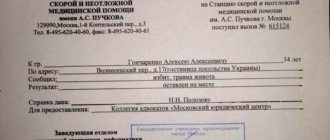Kidnappings in Russia
It’s not for nothing that the 90s of the last century are called “dashing”. The country was in turmoil, all legal and moral restrictions were swept away. One war after another was raging in Chechnya, and the country was being choked by a severe financial crisis. And against this background, crimes surfaced that were previously unheard of in the USSR. Including one of the most cynical and bloody types of criminal business - kidnapping.
This type of crime became a real criminal business, bringing in stable and considerable income, primarily in warring Chechnya. The money received as ransom for the abducted people was used to finance Chechen militants and ended up in the pockets of local “emirs” of all stripes and shades. The bandits did not stand on ceremony with prisoners: they could receive a ransom, and then mutilate and kill the victim.
Gennady Shpigun
On March 5, 1999, the next flight was heading from Grozny airport to Moscow. On board the liner was Police Major General Gennady Shpigun. He said goodbye to the guards who remained on the airfield and climbed aboard. The plane taxied to the takeoff line and began to pick up speed. And then everything went wrong. At the very end of the runway, that is, far from both the general’s security and law enforcement officials, the plane, which had not yet taken off, was blocked by an unknown car. The pilots of the airliner managed to stop and avoid a disaster. Unidentified men with machine guns jumped out of the car and, at gunpoint, forced the crew to open the entrances to the cabin.
Gennady Shpigun
Having burst inside, they grabbed Gennady Shpigun, took him out of the plane, put him in a car and disappeared in an unknown direction. Almost a year later, on March 31, 2000, the body of the kidnapped general was discovered near the village of Itum-Kali. A genetic examination was carried out, which established with absolute accuracy that this was Gennady Shpigun.
Later, the Russian Ministry of Internal Affairs reported that the general was kidnapped on the orders of Shamil Basayev by separatists from the gang of Abdul-Malik Mezhidov. During the entire time the general was alive and in Chechen captivity, no one demanded a ransom for him. The kidnapping and murder of Gennady Shpigun was certainly associated with his active participation in the first and second Chechen wars. They simply settled scores with him.
Crew of the oil tanker Maran Centaurus
Bought for seven million dollars in 2010.
Equivalent to $7.3 million today.
The oil tanker Maran Centaurus, carrying approximately one hundred and fifty million dollars worth of crude oil, was hijacked by Somali pirates in November 2009. His crew of twenty-eight were released two months later when a seven million dollar ransom was dropped on the tanker.
Journalists in captivity
No one knows exactly how many people were kidnapped in Chechnya in the 1990s; such statistics were simply not kept. It is only known that in the “hard decade” more than 46 thousand people were enslaved in the republic. They were used for forced labor - from collecting wild wild garlic to building roads to Georgia through Itum-Kale and Tazbichi. Some of them were not kidnapped, but lured to Chechnya by deception and there they were forced into slavery.
Russian soldiers captured by militants also became slaves. There were hundreds of them, but only a few managed to return home. Those who were kidnapped could be used in two ways. Some were forced to work as slaves, others were kidnapped for ransom. It is characteristic that these crimes became a real business after the withdrawal of troops from Chechnya, starting in mid-1997, when film crews from central Russian television channels were kidnapped in the rebellious republic.
Elena Masyuk
On January 19, ORT journalists Roman Perevezentsev and Vladislav Tibelius disappeared in Chechnya. They were released on February 18, 1997 after lengthy searches and negotiations. And on May 10 of the same year, militants kidnapped an NTV television crew consisting of special correspondent Elena Masyuk, cameraman Ilya Mordyukov and sound engineer Dmitry Olchev. They remained alive and returned to Moscow after 101 days.
However, it is worth noting that the management of the TV channels initially behaved incorrectly. They followed the lead of the kidnappers and huge ransoms were paid for both film crews. It was then that the bandits realized that they could make good and regular money from this. The number of kidnappings has increased sharply, this type of crime has become regular, and a real hunt has been launched for journalists.
From 1997 to 1999, in addition to these two kidnappings, nine more similar crimes were committed against members of the press. In most cases, those abducted returned alive and well, except for one tragic story - in 1994, journalists of the Nevskoe Vremya newspaper Maxim Shabalin and Felix Titov were kidnapped in Chechnya and disappeared without a trace. Nothing is known for sure about their fate to this day.
This continued until the early 2000s, and only the tough hand of Ramzan Kadyrov was able to stop the “Chechen lawlessness” ten years later, although kidnappings for ransom are still taking place in the Caucasus.
How does kidnapping differ from unlawful imprisonment and hostage taking?
The main factor that distinguishes kidnapping from such acts as unlawful imprisonment and hostage taking is the method of its implementation.
When kidnapping occurs, a person is captured and illegally moved against his will, while illegal deprivation of liberty (Article 127 of the Criminal Code of the Russian Federation) involves only limiting the actions of the victim without deliberate removal from his permanent place of residence. In turn, hostage-taking (Article 206 of the Criminal Code of the Russian Federation) is a forcible detention in a situational place and control over their actions in order to force citizens, organizations and even government bodies to fulfill certain conditions set by the captors for the release of citizens. When citizens are kidnapped, the demand for ransom and fulfillment of other conditions is implemented in secret.
TV presenter kidnapping
In the turbulent 90s, kidnappings occurred not only in Chechnya, but throughout Russia. This was one of the favorite methods of putting pressure on businessmen. Even the permanent TV presenter of “Field of Miracles” Leonid Yakubovich became a victim of the kidnappers. Let us recall that the television project itself was invented and promoted by the late Vlad Listyev. And it was one of the most rated and successful projects of Channel One.
Vladislav Listyev
In 1994, a serious conflict of interest occurred at the TV channel. Listyev's opponents tried to pull the rug out from under his feet, depriving Vladislav of the most rated programs. As a result, Leonid Yakubovich was kidnapped. He was brought to some safe house and held there for several days, forcing him to sign a letter of resignation from the “Field of Miracles” program.
However, Yakubovich showed persistence and did not sign anything. Eventually he was released. The showman did not give wide publicity to this story, realizing that he still had to work on the channel, and it was unknown how things would turn out. Maybe that’s why he avoided the fate of Listyev, who was shot by killers in the entrance of his own house on March 1, 1995.
Virginia Piper
Bought for one million dollars in 1972.
Equivalent to $5.5 million today.
Virginia Piper, the wife of retired investment banker Harry S. Piper, was abducted by masked men from her home in Orono County, Minnesota. After Piper paid the ransom demanded, she was found chained to a tree in Duluth.
Two men were later arrested and charged with the kidnapping, but the verdict was overturned.
Kidnappings
As people who worked in the fight against organized crime in the mid-90s of the last century recall, at that time Moscow was literally overwhelmed by a wave of kidnappings of businessmen, their wives and children. The stories were absolutely terrible. For example, bandits tried to protect one businessman who ran trade pavilions at the clothing market in the VDNKh area. At first they simply “ran into” him. But the businessman had his own fairly serious security service and managed to fight off the attack. And then the bandits organized the kidnapping of the businessman’s nine-year-old son.
Kidnappings
The child was taken to school in a car with a guard. One day this car was blocked by two cars of bandits. Having killed the security guard and the driver, the criminals kidnapped the boy, and after some time they called his father demanding to “get out of the market.” And when the businessman became stubborn and turned to law enforcement agencies, he received a parcel with the schoolboy’s cut off fingers. By the way, neither the body of the deceased child nor the kidnappers have been found yet.
As employees of the RUBOP recall, then in the capital this bloody business was “held” by the Georgian mafia - “authorities” who fled Georgia along with their capital, fearing the repressions carried out by Shevardnadze. They settled in Moscow and started kidnapping people. With enormous efforts, the Georgian mafia was brought under control, but this “baton” was immediately picked up by people from the North Caucasus. Although not in such volumes, the kidnappings continued.
An equally terrible story happened in 1996 in the family of the then leader of Yabloko, Grigory Yavlinsky. On the eve of the 1996 elections, his eldest son from the first marriage of the politician’s wife, Mikhail, was kidnapped. After some time, Yavlinsky received a “black mark” - a phalanx of one of the boy’s fingers, wrapped in a note “If you don’t leave politics, we’ll cut off your head.” True, the boy was released immediately after this terrible torture. He got home, his parents rushed to the best surgeons, and the finger managed to heal.
Bobby Greenlees Junior
Bought for $600 thousand in 1953.
Equivalent to $5.1 million today.
The six-year-old son of one of Kansas City's richest men, Greenlees was kidnapped from his school by a man whose girlfriend pretended to be Bobby's aunt. The boy was quickly killed and buried in her backyard, but the couple still managed to escape with a ransom of six hundred thousand dollars in tens and twenties.
The kidnappers, Carl Austin Hall and Bonnie Brown Hedy, were caught some time later because they attracted attention for their rampant spending. They confessed to the crime and were executed.
Most of the money was spent or disappeared.
Corpus delicti
Associated murder: how is it classified?
The contiguity suggests that the abduction occurred either before the murder occurred, or occurred simultaneously.
Thus, we can say that the person could have had the intent to commit murder or it was committed through negligence.
In such cases, such a crime is not covered by only one article, but is qualified by the combination of article one hundred and five and the article of kidnapping.
The Plenum of the Armed Forces of the Russian Federation speaks about this in one of its resolutions.
Samho Dream Team
Bought for nine million dollars in 2010.
Equivalent to $9.4 million today.
A year after the record-breaking ransom for the crew of the tanker Maran Centaurus, Somali pirates hijacked a Korean supertanker in the Indian Ocean. The pirates held the ship's crew of twenty-four for two hundred and seventeen days before receiving their ransom of nine million dollars.
Victor Samuelsen
Ransomed for $14.2 million in 1974.
Equivalent to $69.4 million today.
Esso Argentina (a subsidiary of Exxon) paid $14.2 million to rescue oil refinery manager Victor Samuelson from the hands of Marxist rebels 98 days after his kidnapping. If he refused, the rebels, calling themselves the People's Revolutionary Army, threatened to execute him for the "crimes" of multinational corporations.
Anthony Da Cruz
Bought for one and a half million dollars in 1973.
Equivalent to $7.7 million today.
Da Cruz, a forty-two-year-old chief executive of Kodak in Buenos Aires, was captured by underground terrorists during the wave of kidnappings that swept that country in the seventies. He was treated well and released after the company paid the ransom demanded.
Punishment for the act
Part 1 art. 126 of the Criminal Code of the Russian Federation (general composition) establishes punishment in the form of forced labor - up to 5 years and imprisonment - up to 5 years.
Part 2 art. 126 of the Criminal Code of the Russian Federation (qualifying composition) fixes punishment in the form of imprisonment for up to 12 years. An additional sanction is restriction of freedom - up to 2 years.
The provided measures are prescribed in the following circumstances:
note
In addition to the kidnapping itself, the Criminal Code of the Russian Federation separately regulates the concept of forced labor. Read more about this in the article on our website.
- The act was committed by several persons who conspired with each other . Even at the stage of preparation for a crime, 2 or more people (co-perpetrators) agree on the conditions and location of the kidnapping.
- During the capture, violence was used, posing a threat to life and health . The qualifying feature is taken into account if harm was caused to the injured party, his relatives or third parties during the commission of the act.
- Use of weapons or other items that replace weapons (cold steel, firearms, etc.) . As a substitute for weapons, a hot iron, a sharp stone, a hammer, etc. can be used.
- Kidnapping of a child (in legal journalism this act is called kidnapping). The qualifying feature is taken into account if the offender knows for sure that the person is under 18 years of age.
- Capturing a pregnant woman . The punishment is imposed under Part 2 of Art. 126 of the Criminal Code of the Russian Federation, if the perpetrator knew in advance about the pregnancy of the injured party.
- Possession of several citizens . The kidnapping of 2 or more people can be carried out at once or “serially” (i.e. several times at certain intervals).
- The presence of selfish interest . It refers to the desire of the guilty person to receive material benefit when committing an act. In this case, the benefit may be directly for the criminal or for third parties.
Part 3 art. 127 of the Criminal Code of the Russian Federation (specially qualifying composition) establishes sanctions in the form of imprisonment for up to 15 years. At the discretion of the court, an additional sanction is imposed in the form of restriction of freedom - up to 2 years.
These measures apply in the following circumstances:
- Committing a crime by an organized group . It means that several people are acting for criminal purposes, who have previously united to commit one or more illegal actions.
- The onset of grave consequences for the injured party, including her death . Other serious consequences include bankruptcy of the company, termination of a significant transaction, damage to property values, etc.
Other liability is provided for a set of acts. For example, for kidnapping children for ransom, liability is established not only under Art. 126, but also Art. 163 of the Criminal Code of the Russian Federation.
Patty Hearst
Bought for six million dollars in 1974.
Equivalent to $29.3 million today.
The 19-year-old heiress to the Hearst media conglomerate, a sophomore at the University of California in Berkeley, and her boyfriend were kidnapped by left-wing militants known as the Symbionese Liberation Army (SLA).
The SLA demanded that the Hearst family distribute seventy dollars worth of food to every Californian in need, which would amount to approximately four hundred million dollars. Patty Hearst's father gave away six million dollars worth of food, but the kidnappers were not satisfied, claiming that the food was of poor quality, and refused to release his daughter.
Subsequently, Patty will join the SLA, becoming a canonical example of the manifestation of Stockholm syndrome (a protective psychological connection that arises between the kidnapper and his victim during the abduction process; note Mixednews.ru) And then she will be arrested.
Francis Brimicombe
Purchased for $1.7 million in 1973.
Equivalent to $8.7 million today.
Brimicombe, a fifty-seven-year-old executive director of British American Tobacco, had lived in Argentina for about thirty years before he was kidnapped by a local terrorist group in front of his home while returning from a round of golf. The group reportedly kidnapped him to "obtain funds for their underground activities."
John Paul Getty III
Bought for three million dollars in 1973.
Equivalent to $15.9 million today.
As the sixteen-year-old grandson of a major oil magnate, Getty lived a luxurious life in Italy, where he was kidnapped by Italian gangsters. They demanded seventeen million dollars in ransom for the boy. When price negotiations stalled, Getty's kidnappers cut off one of his ears and sent it to the Italian press.
When the kidnappers reduced the price to three million dollars, the Getty family agreed to pay the ransom. Family patriarch John Paul Getty reportedly paid only $2.2 million, which was the maximum amount eligible for tax deductions, and his son paid the rest.
Charles Lockwood
Bought for two million dollars in 1973 and ten million dollars in 1975.
Equivalent to $52.9 million today.
Lockwood, an executive at Roberts, was kidnapped by an Argentinean ERP gang TWICE over the course of twenty-six months, netting his captors more than fifty million dollars in today's dollars. Can you imagine how his company felt when he was kidnapped a second time?






